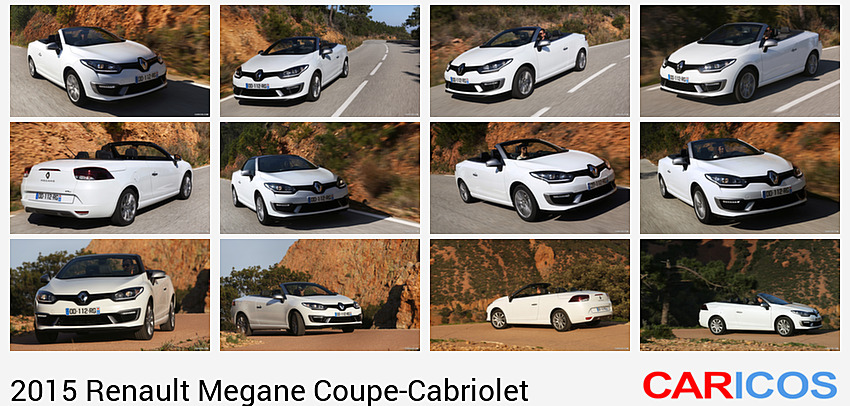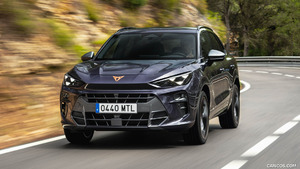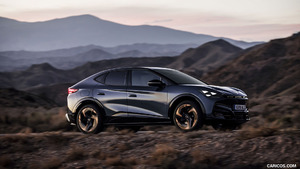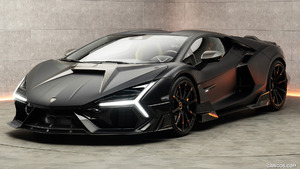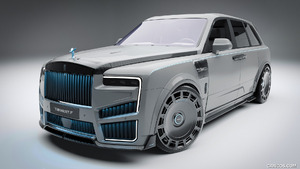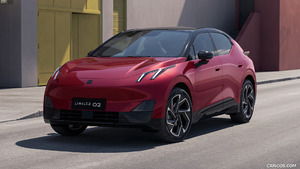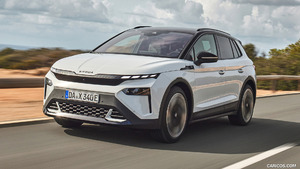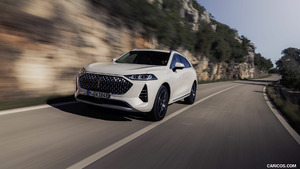Mégane Coupé-Cabriolet
Like the other cars in the range, Mégane Coupé-Cabriolet features Renault’s new brand identity.
That means a new bumper, new headlamps, new air vents and a new hood with a large Renault logo displayed on a shiny black background.
The elongated headlamps stretch out the front end, making the car look wider and contributing to the dynamic air of New Mégane Coupé-Cabriolet.
“By adopting the new visual identity, we have given Mégane Coupé-Cabriolet a look in harmony with the brand’s other cars. The aim with this new design was to preserve the specific features of Mégane Coupé-Cabriole: harmonious lines and a cabriolet look even in the coupé version.”
Jean-Phillipe Texier, Design Project Leader, Range M1
Accent on elegance
A distinctive feature of Nouvelle Mégane Coupé-Cabriolet is its big, black, shiny glass roof. The chrome trim around the windshield combined with the beltline adds a touch of luxury and cabriolet styling, even when the roof is up.
Its unchanged proportions (4,485 mm long, with a wheelbase of 2,609 mm) and its fluid, dynamic lines give it a sleek and elegant shape.
Inside, the forms are soft and clean, the materials and fittings are of the finest quality. And the side-vent and dashboard trim subtly echoes that “shiny, big, black” roof overhead.
New Mégane Coupé-Cabriolet is a model of understated chic and timeless elegance.
Get Away, Stay Conncected
Most of the vehicles in the Renault range already come with the Renault R-Link connected multimedia system. Now it is available on Mégane Coupé-Cabriolet, too.
Multimedia in motion with Renault R-Link
The integrated Renault R-Link multimedia tablet is now available on New Mégane Coupé-Cabriolet, either as standard equipment or an option, depending on the version.
Renault R-Link is the link between the car and connected life.
Renault R-Link brings together all the multimedia functions – navigation, radio, telephone with Bluetooth®, audio streaming, and connectivity for mobile devices. It also provides vehicle-related services and access to the Renault R-Link Store, which offers a catalogue of more than 50 applications for downloading from the car (depending on the country).
The functionalities are controlled via a 7-inch (18-cm) touchscreen that is intuitive and simple to use. A vocal command mode allows easy activation of some functionalities (in nine languages1), while the Text To Speech (TTS) function automatically reads aloud the texts and RSS feeds of certain applications when the car is in motion.
The system can also be controlled with a joystick located in the center console.
Still boasting the largest panoramic glass roof in its segment and a forward-positioned windshield, the car offers unique open-air driving sensations in cabriolet mode with none of the drawbacks. A glass windbreak not found on any other coupé-cabriolet in this segment, reduces airflow disturbance, ensuring maximum comfort for all four passengers at speeds up to 90 km/h.
Offered as an option on New Mégane Coupé-Cabriolet is a removable net that can be installed when no one is sitting in the back for better protection against the wind above 90 km/h. When the weather is bad, the glass roof lets plenty of light into the cabin.
Engines
New Mégane Coupé-Cabriolet delivers sensations galore with engines geared for driving pleasure.
Energy engines: fun and fuel efficiency
Three engines from the Energy range – one petrol and two diesel – have been chosen to power New Mégane Coupé-Cabriolet.
The downsized new-generation Energy engines share the same philosophy: reduce consumption and CO2 emissions while offering pleasure behind the wheel with refined acoustical design.
Energy TCe 130 petrol engine
Introduced with the renewal of the Renault Scénic range in 2013 and available on the new Mégane range, Energy TCe 130 is one of the engines offered with New Mégane Coupé-Cabriolet. This 1.2l engine is flexible and responsive, with quick pick-up even at low revs that makes driving a pleasure. As of mid-2014, this engine will also come with an overboost function, making it even more lively and responsive. This new system activates the turbocharger faster and more often. The Energy TCe 130 engine with overboost thus has more torque (+20 Nm) during start-up and rapid acceleration phases. This means drivers enjoy quicker pick-up and more spirited performance, though owing to the engine’s quiet running and ultra-fast, unobtrusive Stop & Start system, they may forget it is under the hood.
Energy dCi 110 diesel engine
The Energy dCi 110 engine is packed with technologies, including turbocharger architecture, an individualized spray cone angle system, reduced friction, and the same technology package as the Energy dCi 130 engine and benefited from a work on the frictions’ reduction.
\With torque of 260 Nm (an increase of 20 Nm) available from 1,750 rpm, the Energy dCi 110 engine has plenty of pep even at low engine speeds. Rounding out its performance, CO2 emissions are 115 g/km1 and fuel consumption 4.5 l/100 km1 for a combined cycle.
Energy dCi 130 diesel engine
The Energy dCi 130 is a powerful, 1,598-cm3 diesel engine producing 130 hp. The generous torque of 320 Nm – 80% of it available from 1,500 rpm and supplied across a broad usable rev band – delivers the fast and efficient pick-up that makes driving enjoyable. The Energy dCi 130 easily revs up to 4,500 rpm, much higher than an average diesel, for the kind of driving that normally demands a larger engine. Developed by Renault engineers from the Formula 1 world and incorporating technologies derived from experience on the racetrack, it delivers cutting-edge performance while consuming a modest, combined-cycle 4.4 l/100km1,2.
Smoother driving with the EDC automatic gearbox
EDC dCi 110 diesel engine
The 1.5 dCi diesel engine has a second-generation Common Rail direct injection system, which compresses the precise quantity of fuel necessary, thus boosting efficiency and lowering consumption. The EDC dCi 110 engine delivers 110 hp at 4,000 rpm, with combined-cycle consumption of just 4.8 l/100km1,2.
Paired with an efficient dual-clutch (EDC) automatic gearbox, this engine provides flexible, responsive performance and smooth, powerful acceleration.
The New Renault Megane Range: Petrol Plus Automatic
The new Mégane range introduces the TCe 130 coupled with an efficient dual-clutch (EDC) six-speed gearbox.
TCe 130: a quality-tested engine
The TCe 130 is a turbo petrol, direct-injection engine from the quality- and performance-tested Energy TCe 1301 family. With torque of 205 Nm at 2,000 rpm, it offers real driving pleasure, excellent acceleration, and prompt response to the driver’s demands.
EDC automatic gearbox: even more responsive
Paired with the TCe 130 engine is the efficient dual-clutch (EDC) six-speed automatic gearbox, whose close gear ratios produce even more dynamic performance.
Its six speeds, shifted automatically or by the driver in up/down mode, deliver smooth and powerful acceleration. Dual-clutch technology ensures rapid, flexible and fluid gear changes. The instant response during gear changes also means greater safety when changing lanes in traffic or passing another vehicle.
A crawl function is available on the EDC gearbox, making it easy to advance slowly in heavy traffic simply by releasing the brake pedal. It also provides quicker acceleration and a firm takeoff. Similarly, the hill start assist keeps the car from rolling backwards before the Drive gear kicks in.
As for consumption and CO2 emissions, the EDC gearbox comes close to matching the performance of a manual gearbox. It has the power to go from 0 to 100 km/h in 9.5 seconds. CO2 emissions are low, at 129 g, as is the combined-cycle consumption of 5.6 l/100 km2.
How the EDC automatic gearbox works
The EDC (Efficient Dual Clutch) automatic gearbox combines the convenience of an automatic transmission with the responsiveness of a manual gearbox.
There is no clutch pedal, and gears are changed either automatically (PRND) or with an up/down shift mode. Gearshifts commanded by an electronic control unit that selects the right gear are automatic and easy. To optimize efficiency and fuel consumption, Renault has opted for the dry dual-clutch technology, with which one clutch is for the odd-number gears (1st, 3rd, and 5th) and the other for the even-number gears (2nd, 4th and 6th) as well as reverse.

